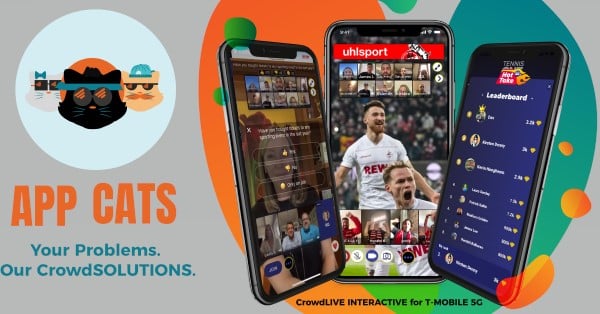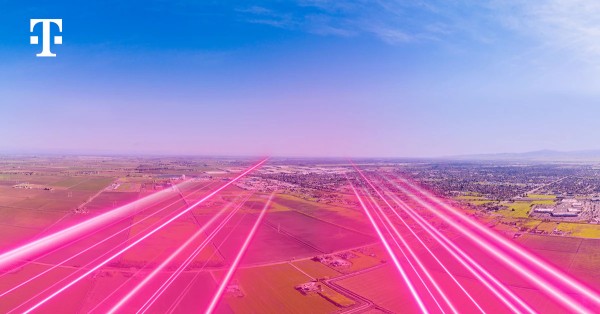T-Mobile US has announced its selection of nine emerging companies to join its annual Accelerator Programme, focusing on groundbreaking 5G experiences for sports and live events this year. The selected companies include App Cats, which offers a 5G live streaming platform, audience survey tools, and fan engagement rewards. Another participant, Cue Audio, utilizes venue speakers and spectators’ devices to coordinate fan activities, such as group selfies or cell phone light shows.
Extended reality (XR) expert FansXR distributes 360-degree video content and supplies augmented reality (AR) overlays for performance statistics and game data. PixelFly specializes in first-person view (FPV) drone coverage of broadcast events. The complete list of chosen start-ups can be found below.
By participating in the Accelerator Programme, these companies gain access to T-Mobile’s 5G resources and expertise, helping them refine and expand their offerings.
T-Mobile US envisions a future where stadiums host 5G-enabled drones capturing novel camera angles, first-person cameras allowing thousands of fans to experience athletes’ perspectives in real-time, and AR and virtual reality (VR) experiences. However, some argue that such enhancements could detract from the live experience by distancing attendees from the event and other spectators.
Certain stop-start sports might benefit from AR overlays of player statistics during breaks, while others suggest that fans could simply engage in conversation while waiting for the action to resume. Real-time value-added experiences might be better suited for spectators who cannot attend events in person, offering opportunities for real-time live video streaming.
Regardless of the potential limitations of some use cases, if even one of these innovations catches on, T-Mobile and the broader telecoms industry will consider the sports-themed Accelerator Programme a success.
The nine selected companies, as described by T-Mobile US, are as follows:
- APP CATS LLC (Minneapolis, Minn.) — APP CATS’ CrowdSOLUTIONS creates unique opportunities to interact with fans through its 5G enabled live streaming platform, audience surveying tools and fan engagement rewards, which are all available as turn-key plug-ins or as a custom standalone platform.
- CUE Audio (Denver, Colo.) — CUE Audio develops fan-first technology that uses in-venue speakers and fans’ mobile devices to routinely synchronize crowds of all sizes to capture the world’s largest simultaneous selfies, choreograph spectacular cell phone light shows, host multiplayer trivia games and more.
- FansXR (Las Vegas, Nev.) — FansXR delivers an Xtended reality (XR) streaming platform using augmented AR, XR, and 360-degree video distributed to any digital device or Metaverse portal powered by 5G and edge compute technology. For sports and events, FansXR geolocates athletes in stadiums offering an augmented reality overview of performance stats, game data and more.
- ForwARdgame (Berlin, Germany) — Since 2017 forwARdgame leverages the newest technologies to infuse the real world with virtual experiences and let people freely play in AR by physical activity.
- Immersal (Helsinki, Finland) — Immersal’s Visual Positioning (VPS) technology can convert any city, venue or area into a spatial map that can support a variety of AR experiences, commercial functions and can be used by autonomous vehicles and robots servicing the area.
- MeetMo (Los Angeles, Calif.) — MeetMo is a cloud-native platform connecting devices, people and ideas to facilitate real-time collaboration.
- Mindfly (Tel Aviv, Israel) — MindFly is a fully automated First-Person-View (FPV) solution that lets fans see, hear and feel exactly what pro sports players and referees do during official games, exhibition games and behind-the-scenes training. Mindfly also captures, processes and distributes post-game highlights to social platforms and replays for live TV.
- PixelFly (Minneapolis, Minn.) — PixelFly specializes in live FPV drone coverage for broadcast events and marketing activations leveraging custom drones developed in partnership with brands featuring the latest technology to deliver footage and experiences that aren’t possible with traditional, existing drone platforms.
- Ydrive (Seattle, Wash.) — Ydrive empowers everyone to capture the world in photorealistic 3D with just a few smartphone images. Its AI platform generates lifelike digital twins and 3D maps, complete with stunning visuals, semantic understanding, and rich metadata. Compatible with popular 3D applications, Ydrive is perfect for content creation, immersive gaming, movie production, architectural preservation, real estate, robotics, and more.






























